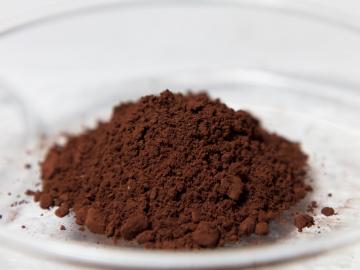
Filter News
Area of Research
- Advanced Manufacturing (13)
- Biology and Environment (17)
- Building Technologies (1)
- Computational Engineering (1)
- Electricity and Smart Grid (1)
- Energy Science (51)
- Functional Materials for Energy (1)
- Fusion and Fission (14)
- Fusion Energy (9)
- Isotopes (3)
- Materials (33)
- Materials for Computing (6)
- Mathematics (1)
- National Security (3)
- Neutron Science (5)
- Nuclear Science and Technology (15)
- Nuclear Systems Modeling, Simulation and Validation (2)
- Supercomputing (12)
News Type
News Topics
- (-) 3-D Printing/Advanced Manufacturing (57)
- (-) Advanced Reactors (18)
- (-) Composites (16)
- (-) Frontier (10)
- (-) Fusion (19)
- (-) Microscopy (21)
- (-) Nuclear Energy (36)
- (-) Partnerships (11)
- (-) Security (4)
- Artificial Intelligence (33)
- Big Data (26)
- Bioenergy (26)
- Biology (31)
- Biomedical (18)
- Biotechnology (6)
- Buildings (31)
- Chemical Sciences (31)
- Clean Water (14)
- Computer Science (70)
- Coronavirus (15)
- Critical Materials (13)
- Cybersecurity (9)
- Emergency (2)
- Energy Storage (50)
- Environment (67)
- Exascale Computing (11)
- Fossil Energy (1)
- Grid (28)
- High-Performance Computing (33)
- Hydropower (6)
- Irradiation (3)
- Isotopes (15)
- ITER (5)
- Machine Learning (19)
- Materials (70)
- Materials Science (54)
- Mathematics (3)
- Mercury (3)
- Molten Salt (6)
- Nanotechnology (25)
- National Security (13)
- Neutron Science (42)
- Physics (11)
- Polymers (15)
- Quantum Computing (9)
- Quantum Science (17)
- Simulation (16)
- Software (1)
- Space Exploration (11)
- Statistics (1)
- Summit (11)
- Transportation (52)
Media Contacts

United Rare Earths has licensed two innovative technologies from Oak Ridge National Laboratory aimed at reducing dependence on critical rare earth elements.

Scientists at ORNL have developed a vacuum-assisted extrusion method that reduces internal porosity by up to 75% in large-scale 3D-printed polymer parts. This new technique addresses the critical issue of porosity in large-scale prints but also paves the way for stronger composites.

Neus Domingo Marimon, leader of the Functional Atomic Force Microscopy group at the Center for Nanophase Materials Sciences of ORNL, has been elevated to senior member of the Institute of Electrical and Electronics Engineers.

Researchers at Stanford University, the European Center for Medium-Range Weather Forecasts, or ECMWF, and ORNL used the lab’s Summit supercomputer to better understand atmospheric gravity waves, which influence significant weather patterns that are difficult to forecast.

A paper written by researchers from the Department of Energy’s Oak Ridge National Laboratory was selected as the top paper of 2023 by Welding Journal that explored the feasibility of using laser-blown powder direct energy deposition, or Laser-powder DED.
Seven scientists affiliated with ORNL have been named Battelle Distinguished Inventors in recognition of being granted 14 or more United States patents. Since Battelle began managing ORNL in 2000, 104 ORNL researchers have reached this milestone.

ORNL has been recognized in the 21st edition of the HPCwire Readers’ and Editors’ Choice Awards, presented at the 2024 International Conference for High Performance Computing, Networking, Storage and Analysis in Atlanta, Georgia.

Researchers used the world’s fastest supercomputer, Frontier, to train an AI model that designs proteins, with applications in fields like vaccines, cancer treatments, and environmental bioremediation. The study earned a finalist nomination for the Gordon Bell Prize, recognizing innovation in high-performance computing for science.

Researchers at Oak Ridge National Laboratory used the Frontier supercomputer to train the world’s largest AI model for weather prediction, paving the way for hyperlocal, ultra-accurate forecasts. This achievement earned them a finalist nomination for the prestigious Gordon Bell Prize for Climate Modeling.

A research team led by the University of Maryland has been nominated for the Association for Computing Machinery’s Gordon Bell Prize. The team is being recognized for developing a scalable, distributed training framework called AxoNN, which leverages GPUs to rapidly train large language models.


